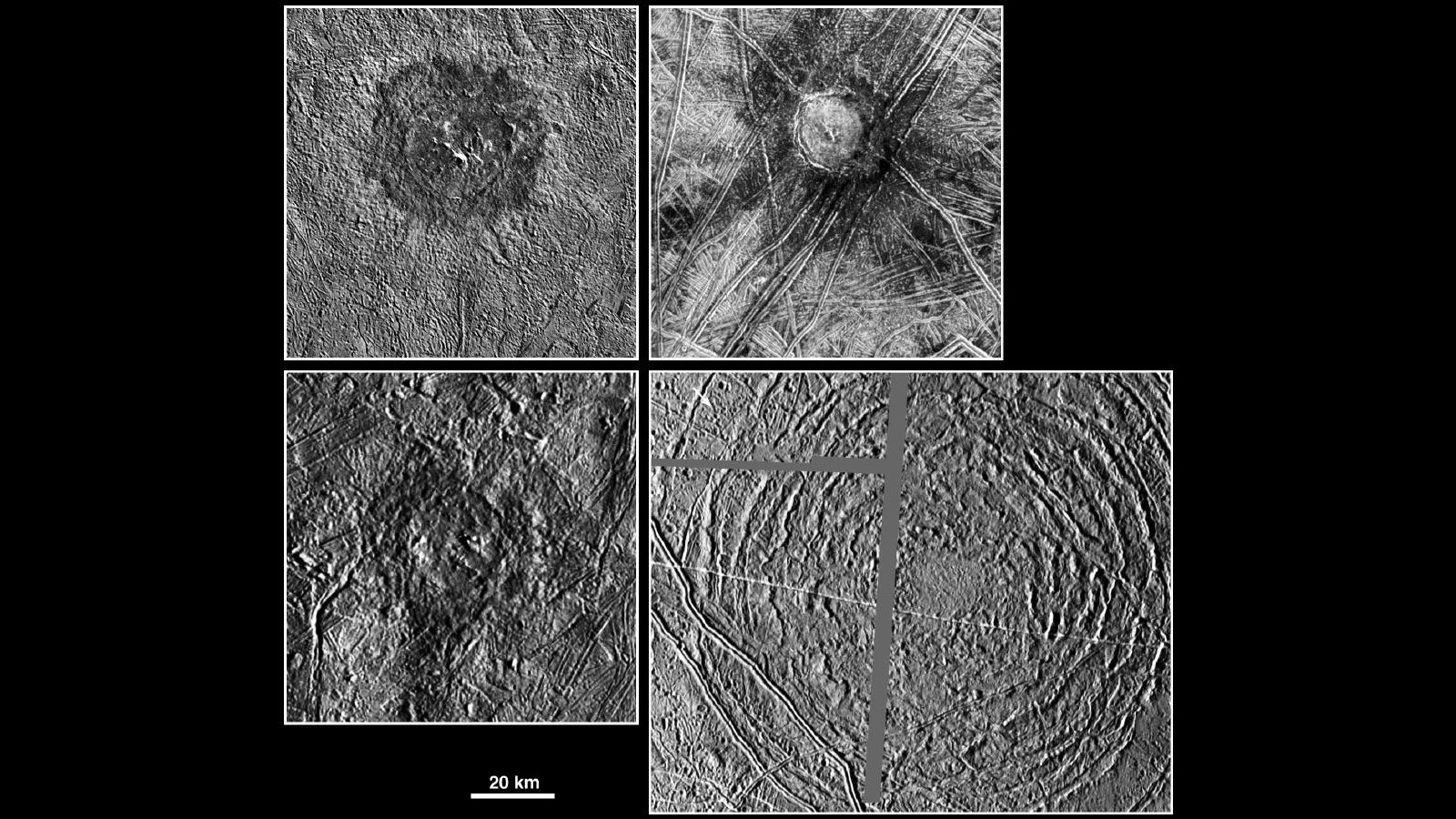Europa's icy crust may let more material into hidden ocean than thought

New research shows that even smaller impacts can warm and soften enough ice on Jupiter's moon Europa to send material sinking into the underlying ocean. This finding explains a new transport mechanism that could deposit important ingredients into the moon's ocean.
The icy shell of Jupiter's moon Europa is marked with craters, most of which are from small impacts that dent the moon's surface but are not big enough to penetrate all the way to its underlying ocean. Now, researchers have shown that impacts that penetrate even halfway through the ice shell accumulate enough meltwater to sink through the rest of the ice and into the underlying ocean.
"Once you get enough water, you're just going to sink,” Evan Carnahan, a doctoral student at the University of Texas at Austin and lead author on the new research, said in a statement. "It's like the Titanic times 10."
Related: Juno photos reveal more stunning glimpses of Jupiter's ice-covered moon Europa
Such drainage, which the researchers found could occur over 10,000 to 100,000 years, is a critical mechanism to transport oxidants — chemicals that can easily gain electrons from other substances, triggering chemical reactions — from the moon's surface to its ocean, increasing its chances for habitability.
Previous studies had assumed that impacts need to pierce through the ice, which limited potential transport of minerals to only the largest of impacts. The latest research expands this range by showing that much smaller, non-penetrating impacts are, in fact, sufficient to do the job.
"This increases the probability that you would have the necessary chemical ingredients for life," Marc Hesse, a geoscientist at the University of Texas at Austin and a co-author on the research, said in the same statement.
Breaking space news, the latest updates on rocket launches, skywatching events and more!
Scientists have long thought that comet impacts might be important carriers of organic molecules necessary for life, and the nearly two dozen craters on Europa's surface show that the moon has certainly been visited by comets and asteroids. Additionally, radiation from Jupiter splits water molecules into hydrogen and oxygen, leading to the availability of oxygen on the moon's surface.
However, how these crucial minerals deposited on the moon's surface could reach its subsurface ocean has been poorly understood.
In the new research, scientists used numerical simulations to model the long-term evolution of crater sites after impacts. They also studied how the melted and mineral-rich water travels through the ice. Across nine simulations, researchers modeled meltwater sinking through ice shells of varying thickness given different impactor conditions to better understand when material might sink into the ocean.
For Europa, their analysis determined that if impacts manage to penetrate just half of the moon's 10-to-15-miles-thick (16 to 24 kilometers) surface, 40% of the generated meltwater will sink into its ocean. To put it into perspective, a half-mile-wide (0.8 km) comet that descended halfway through the shell would have melted enough of the surrounding ice to fill Oregon's Crater Lake.
Researchers also show that the melt chamber beneath Manannán, one of Europa's largest impact craters, would sink over 6.7 cubic miles (28 cubic km) of meltwater from the moon's surface to its ocean within 1,000 years.
The researchers said that this mechanism is a natural consequence of impacts, which means it is true not only for Europa, but for most icy worlds. Saturn's moon Titan is also suspected to have a hidden ocean underneath its outer shell, which is between 30 and 120 miles (48 and 190 km) thick.
Even with these models, scientists aren't yet sure how many of the minerals present at the surface survive the impacts and exactly how much could make its way into the meltwater and consequently into the subsurface ocean.
The research is described in a paper published Nov. 28 in the journal Geophysical Research Letters.
Follow Sharmila Kuthunur on Twitter @Sharmilakg. Follow us on Twitter @Spacedotcom and on Facebook.

Sharmila Kuthunur is an independent space journalist based in Bengaluru, India. Her work has also appeared in Scientific American, Science, Astronomy and Live Science, among other publications. She holds a master's degree in journalism from Northeastern University in Boston.

